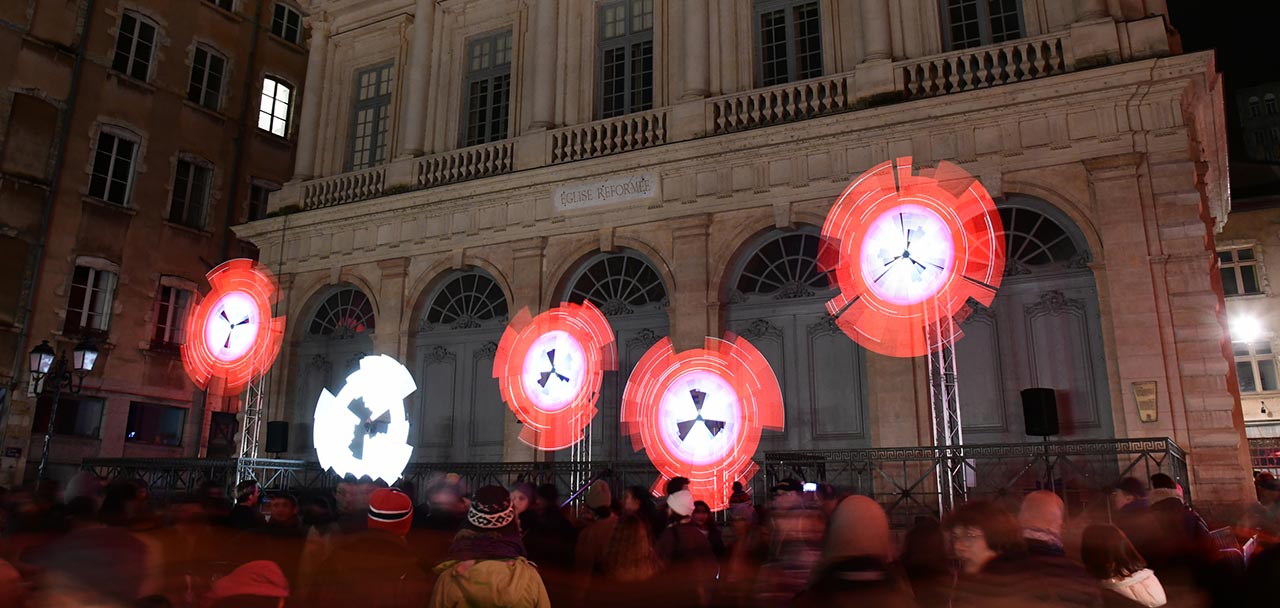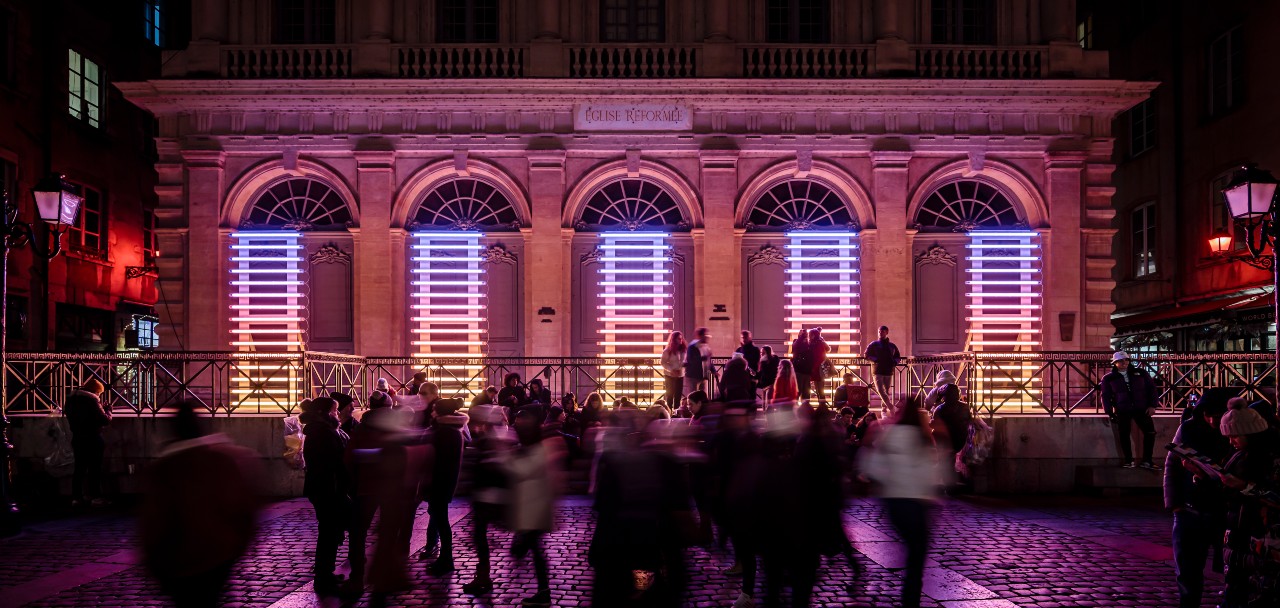At the end of the 15th century, under François I, Lyon became the leading financial centre in Europe. The customs house was then located near the Pont du Change (demolished in 1842), a stone's throw from the Place du Change. The latter, in the "Changeurs" district, had been occupied by merchants since the 13th century, as no official building had been provided for the moneychangers. It was between 1631 and 1653 that the first "Loge des Changes" was built, based on the plans of Simon Gourdet, for the trade and the money changers.
In 1803, within the framework of the Concordat and the organic articles re-establishing the cults in France, the "Loge du Change" was entrusted by the city of Lyon to the Protestant community of Lyon. It was at this time that the former Loge du Change became, by prefectural decree, the Temple du Change.
In December 1999, to celebrate the new millennium, the city of Lyon and the renaissance of Vieux Lyon brought to light Soufflot's desire to have two clocks crown the façade. The clock on the right is familiar to passers-by, as it has been there since the building was built. It is the clock face on the left that is most surprising: an exceptional piece, this so-called "ideal" clock, desired by Soufflot but never built, marks the days, months and years.

